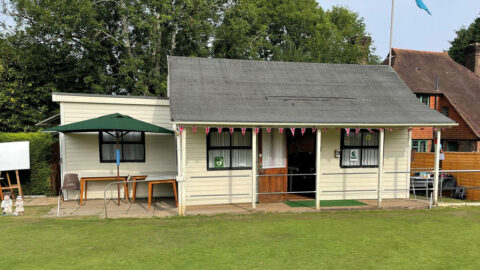The secrets of the Isle of Thorns

Lying within the grounds owned by Cats Protection at Chelwood Gate within Ashdown Forest is an area with a rich history – a journey which brings us to the modern day through farming, education and sport.
The Isle of Thorns is both a contradiction and an enigma – the name of the areas goes back to at least the 16th century with its origins likely from a description of the terrain – an area enclosed by thorns.
A thorny enclosed space of land would be ideal for keeping sheep safe from predators such as foxes and other wild animals and as such was used for farming and the keeping of animals for local people.
The bowls club which today takes centre stage was founded in 1909 by a group of former Etonians – Sir Edward Cadogan, Gerald Wellesley, Arthur Villiers and Alfred Wagg growing out of existing work.
Since 1880, the area had operating in it a mission church supported by Eton College – thereafter a boys camp developed in the 1920s with inner-city school boys visiting rural Sussex for outdoor activities.
Boys from Hackney came in large numbers to benefit from the fresh air the countryside had to offer in contrast to the urban environments of London they lived in and to instill a sense of adventure.
The camp was started by the Eton Manor Boys’ Club (EMBC) with the ethos of adopting an adventurous ‘can do’ attitude where boys were expected to take part in as many activities as possible.
Amenities available to the boys included a swimming pool, a gymnasium and accommodation blocks at the site and by 1934 a bowling green had been constructed in the grounds for the boys to use.
In 1964, Sussex University had the use of the area and to this day their observatory located in the grounds is still in working order – the sale of the grounds to Cats Protection took place in 2002.
The bowling green is now considered to be one of the finest bowling greens in the South East of England and the club manages to combine casual bowling with more competitive club matches.
The tranquil setting of the whole of the Isle of Thorns makes for an ideal working and playing environment – those working or visiting the Cats Protection or those playing bowls at the club.
Arriving at the Cats Protection visitors travel along a pleasant tree-lined lane to an area of great outstanding natural beauty, both the Centre and the club are worth paying a visit!
For more information about the Cats Protection National Centre, visit: www.cats.org.uk/ncac
For more information about the Isle of Thorns Bowls Club, visit: www.iotbowls.co.uk/
By Jacob White









